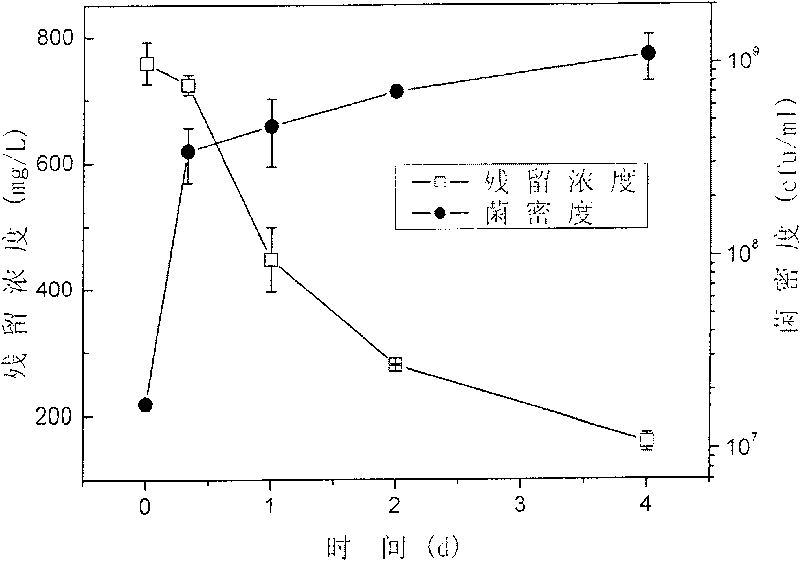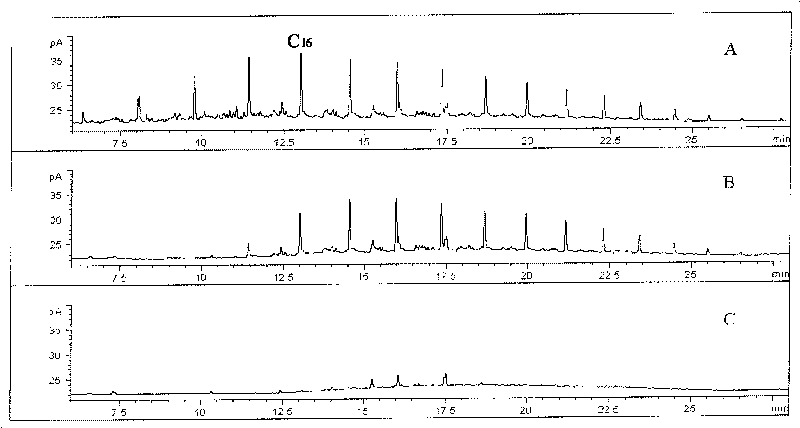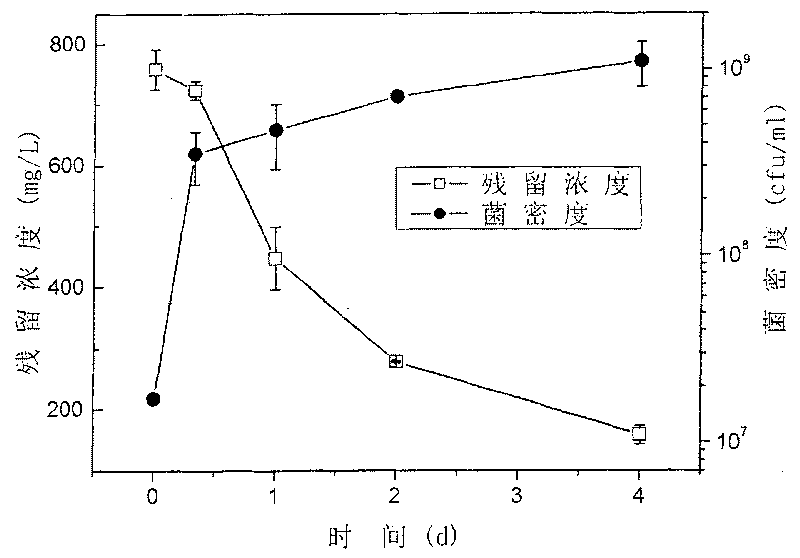Diesel oil alkane component degradation bacterium and application thereof
A kind of alkane-degrading bacteria and degrading bacteria technology, applied in the direction of bacteria, water/sludge/sewage treatment, biochemical equipment and methods, etc., to achieve stable and efficient degradation performance, good adaptability, and high-efficiency alkane degradation ability
- Summary
- Abstract
- Description
- Claims
- Application Information
AI Technical Summary
Problems solved by technology
Method used
Image
Examples
Embodiment 1
[0013] Example 1: Screening and isolation of alkane-degrading bacteria Burkholderia cepacia GS3C and its alkane degradation performance
[0014] Collect the oily sludge mixture from the sewage treatment station of Guangzhou Petrochemical General Plant, take 5g of the soil sample in 100ml sodium pyrophosphate solution, place it in a shaker and shake overnight. With n-hexadecane as the sole carbon source, the shaking solution was inoculated into an inorganic salt medium and cultivated in a 30C, 150rpm shaker. The composition of the inorganic salt medium (MSN) is as follows (g / L): MgSO 4 ·7H 2 O, 0.2; CaCl 2 ·2H 2 O, 0.02; K 2 HPO 4 , 0.5; KH 2 PO 4 , 0.5; NH 4 NO 3 , 0.5; Trace element solution, 10ml / L. The composition of the trace element solution is (mg / L): FeSO 4 ·7H 2 O, 300; MnSO 4 ·H 2 O, 50; CoCl 2 ·6H 2 O, 106; Na 2 MoO 4 ·2H 2 O, 34; ZnSO 4 ·7H 2 O, 40; CuSO 4 ·5H 2 O, 50. Adjust the pH to 7.0.
[0015] After repeated domestication and separation and purification, an alkan...
Embodiment 2
[0018] Example 2: The effect of the addition of yeast extract on the degradation of alkane-degrading bacteria Burkholderia cepacia GS3C of different initial concentrations of carbon sources
[0019] Using n-hexadecane as the carbon source, the alkane-degrading bacterium Burkholderia cepacia GS3C was inoculated into an inorganic salt medium and cultured for 4 days. A control group without and with yeast extract solution (600 mg / L) was set up, and the concentration of the current carbon source was determined. When it is 750, 3750, 7500mg / L, the degradation rate and degradation rate of n-hexadecane by degrading bacteria. It can be seen from Table 1 that the degrading bacteria GS3C can still grow normally at a high substrate concentration of 7500 mg / L. At the same time, as the concentration of n-hexadecane continues to increase, the degradation rate has a trend of decreasing, but due to the degrading bacteria The available carbon and energy sources are sufficient, but the degradation...
Embodiment 3
[0023] Example 3: The effect of heavy metal Cd on the degradation of alkane-degrading bacteria Burkholderia cepacia GS3C
[0024] The alkane-degrading bacteria Burkholderia cepacia GS3C was inoculated into an inorganic salt medium containing n-hexadecane at a concentration of 750 mg / L, and Cd at concentrations of 0.3, 3, and 9 mg / L were added. 2+ At the same time without adding Cd 2+ The sample of is a control, and the degradation rate of n-hexadecane after 4 days is measured. It can be seen from Table 2 that in the experimental concentration range (0-9mg / L) Cd 2+ It has no toxic effect on degrading bacteria, but has a certain promoting effect.
[0025] This example illustrates Cd with higher environmental biological toxicity 2+ Burkholderiacepacia GS3C is not only non-toxic to alkane degrading bacteria, but also has a certain promoting effect, and has the potential to be used in the remediation of petroleum-heavy metal (Cd) composite pollution system.
[0026] The effect of heavy me...
PUM
 Login to View More
Login to View More Abstract
Description
Claims
Application Information
 Login to View More
Login to View More - R&D
- Intellectual Property
- Life Sciences
- Materials
- Tech Scout
- Unparalleled Data Quality
- Higher Quality Content
- 60% Fewer Hallucinations
Browse by: Latest US Patents, China's latest patents, Technical Efficacy Thesaurus, Application Domain, Technology Topic, Popular Technical Reports.
© 2025 PatSnap. All rights reserved.Legal|Privacy policy|Modern Slavery Act Transparency Statement|Sitemap|About US| Contact US: help@patsnap.com



